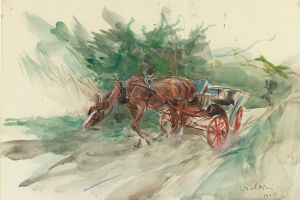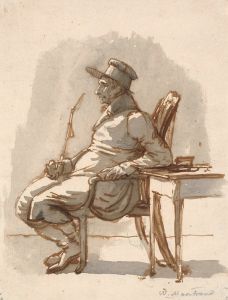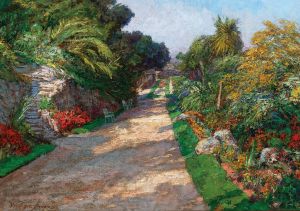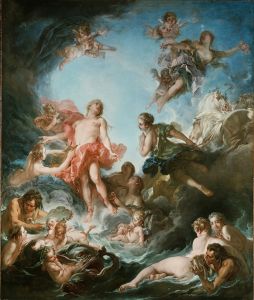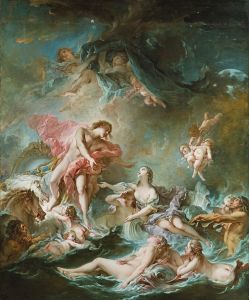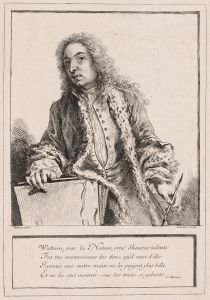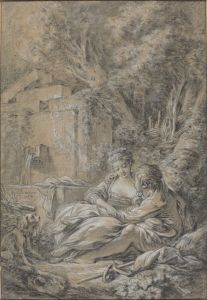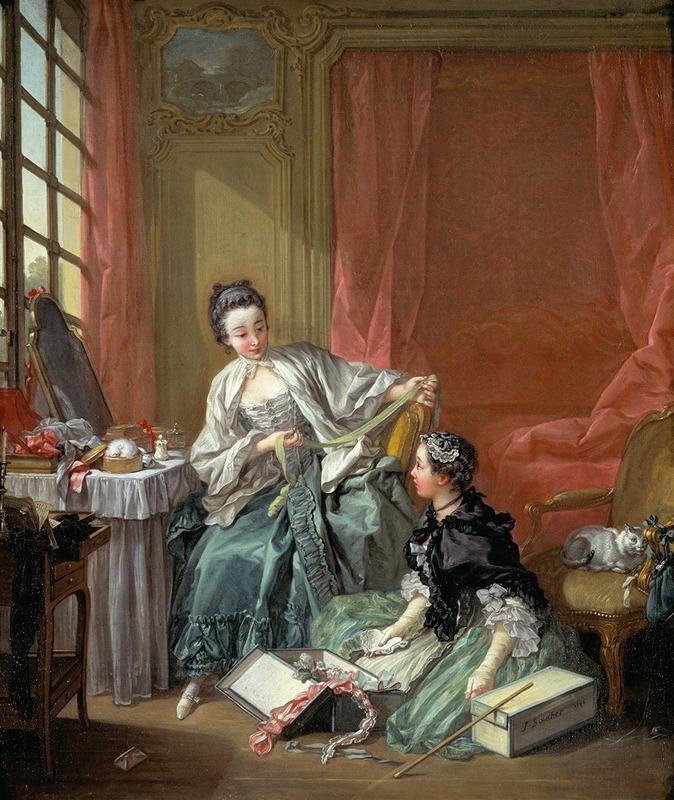
The Milliner
A hand-painted replica of François Boucher’s masterpiece The Milliner, meticulously crafted by professional artists to capture the true essence of the original. Each piece is created with museum-quality canvas and rare mineral pigments, carefully painted by experienced artists with delicate brushstrokes and rich, layered colors to perfectly recreate the texture of the original artwork. Unlike machine-printed reproductions, this hand-painted version brings the painting to life, infused with the artist’s emotions and skill in every stroke. Whether for personal collection or home decoration, it instantly elevates the artistic atmosphere of any space.
François Boucher, a prominent French painter of the Rococo style, created "The Milliner" in 1746. Boucher was renowned for his idyllic and voluptuous paintings, which often depicted classical themes, pastoral scenes, and the daily lives of the French aristocracy. His work is characterized by its playful elegance, soft colors, and intricate details, which are all evident in "The Milliner."
"The Milliner" is an oil painting that exemplifies Boucher's skill in capturing the leisurely and luxurious lifestyle of 18th-century France. The painting portrays a young woman engaged in the craft of millinery, the art of hat-making, which was a fashionable and essential trade during that period. The subject is depicted in a domestic interior, surrounded by the tools of her trade, including ribbons, fabrics, and partially completed hats. This setting not only highlights the importance of fashion in the Rococo era but also provides a glimpse into the private, everyday activities of women at the time.
Boucher's attention to detail is evident in the delicate rendering of textures and materials, from the softness of the fabrics to the sheen of the ribbons. The artist's use of light and color enhances the painting's sense of intimacy and warmth, drawing the viewer into the serene world of the milliner. The composition is balanced and harmonious, with the figure of the milliner serving as the focal point, surrounded by the carefully arranged elements of her craft.
The painting reflects the Rococo style's emphasis on beauty, elegance, and the pleasures of life. Boucher's work often celebrated the leisurely pursuits of the upper classes, and "The Milliner" is no exception. It captures a moment of quiet industry, where the act of creation is both a personal and aesthetic experience. The painting also subtly comments on the role of women in the arts and crafts, highlighting their contributions to the cultural and social fabric of the time.
François Boucher was a favored artist of Madame de Pompadour, the chief mistress of King Louis XV, and his work was highly sought after by the French court. His paintings, including "The Milliner," were instrumental in defining the Rococo aesthetic, which was characterized by its ornate and decorative qualities. Boucher's influence extended beyond painting, as he also worked in tapestry design, printmaking, and set design for the theater.
"The Milliner" remains an important example of Boucher's work and the Rococo period, showcasing the artist's ability to blend technical skill with a keen sense of beauty and charm. Today, Boucher's paintings are celebrated for their contribution to the development of 18th-century French art, and "The Milliner" continues to be appreciated for its artistic and historical significance.





